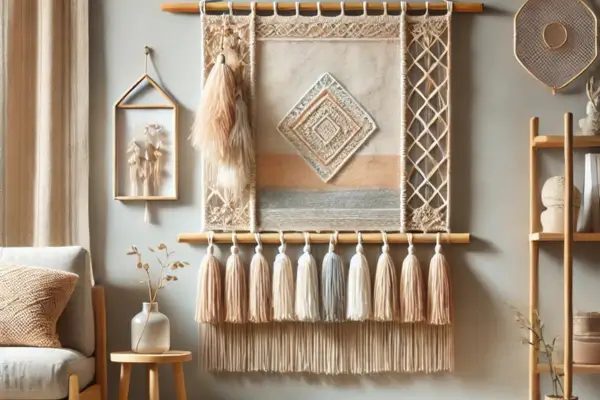DIY custom fabric patches are an easy way to add personality to your wardrobe. These small embellishments transform ordinary items into unique creations. They are perfect for personalizing clothes and accessories.
Custom fabric patches have gained popularity in recent years. They are affordable, creative, and beginner-friendly. With minimal materials, you can create stunning designs at home.
Patches are also eco-friendly. By upcycling old clothes, you reduce waste and promote sustainability. Let’s explore how to make your own patches step by step.
Why Custom Fabric Patches Are Trending
Custom fabric patches reflect individuality and creativity. They allow you to express yourself without needing advanced skills. Each patch tells a story or represents a passion.
One reason for their popularity is versatility. Patches work on jackets, bags, hats, and shoes. For example, a denim jacket with patches becomes a bold fashion statement.
Another advantage is affordability. You don’t need expensive tools or materials. Leftover fabrics or thrifted items can be repurposed into beautiful designs.
Additionally, patches support sustainability. Instead of discarding worn-out clothes, you can refresh them with patches. This aligns with the growing trend of conscious consumerism.
Materials You’ll Need to Create Custom Patches
Gather these essential materials before starting your project. Each item plays a specific role in the process.
- Fabric scraps or felt
- Fabric scissors or rotary cutter
- Iron-on adhesive or fabric glue
- Sewing machine or needle and thread
- Fabric markers or embroidery supplies
Fabric scraps are ideal for creating colorful designs. Felt is durable and works well for beginners.
Sharp tools like scissors or rotary cutters ensure clean edges. Precision matters when cutting intricate shapes.
Iron-on adhesive makes application quick and easy. Fabric glue is a no-sew alternative. Both options suit different skill levels.
Here’s a cost comparison of methods:
| Method | Cost | Best For | Pros | Cons |
|---|---|---|---|---|
| Iron-On Adhesive | Low | Beginners and quick fixes | Easy to apply, no sewing | May peel over time |
| Sewing | Moderate | Long-lasting results | Durable, professional finish | Requires sewing skills |
| Embroidery | Moderate | Detailed designs | Adds texture and depth | Time-consuming |
Choose the method that fits your project. For example, iron-on adhesive is great for kids’ backpacks. Sewing ensures durability for high-wear items.
Step-by-Step Guide to Design Your Own Patches
Follow these steps to create and apply custom patches. Each step is simple and beginner-friendly.
- Choose Your Design
Start by sketching your idea on paper. Keep it simple for beginners. Popular designs include initials, symbols, or illustrations.Look for inspiration online. Platforms like Pinterest or Instagram showcase creative patch designs.Ensure the design fits the item you plan to embellish. A large patch works well on jackets but may look out of place on hats. - Transfer the Design to Fabric
Use fabric markers to draw directly onto the material. Alternatively, trace the design using carbon paper.For dark fabrics, use tailor’s chalk or washable pens. Test the tool on a scrap piece first to avoid smudging.Take your time during this step. Clean lines ensure a professional-looking result. - Cut Out the Patch Shape
Use sharp scissors to cut around the edges. Leave a small border for sewing or gluing.For intricate designs, use a rotary cutter or craft knife. Precision prevents mistakes.Handle small pieces carefully. Uneven edges can detract from the overall appearance. - Attach the Backing
If using iron-on adhesive, follow the package instructions. Place the adhesive side down and press with an iron.For sewing, reinforce edges with a zigzag stitch. This prevents fraying and ensures durability.Combine methods if needed. For example, use iron-on adhesive for initial attachment and sew for extra security. - Apply the Patch to Your Item
Position the patch where desired. Use an iron or sew it onto the fabric.When ironing, place a thin cloth over the patch. Press firmly for 20-30 seconds, then let it cool.For sewing, use matching thread. Consider decorative stitches like blanket stitch for added flair.
Creative Ideas for Using Custom Patches
Get inspired by these creative ideas. Patches can transform various items into personalized treasures.
- Revamp old jackets with themed patches. Mix designs for a bold look.
- Decorate tote bags or backpacks with meaningful symbols. Great for students or travelers.
- Create unique gifts by adding patches to hats or notebooks. Perfect for special occasions.
Experiment with placements and combinations. Layer smaller patches on larger ones for a dynamic effect.
Tips for Making Your Patches Stand Out
Use these tips to enhance your designs. Small details make a big difference.
- Use contrasting colors. Bright hues pop on dark fabrics.
- Experiment with textures. Combine felt with embroidery for depth.
- Layer multiple patches for a collage effect. Add dimension and interest.
Practice makes perfect. Don’t be afraid to try new techniques. Mistakes are part of the learning process.
By adding custom fabric patches to your projects, you unlock endless creativity. Transform ordinary items into personalized treasures. Start experimenting today and enjoy the joy of DIY customization.



